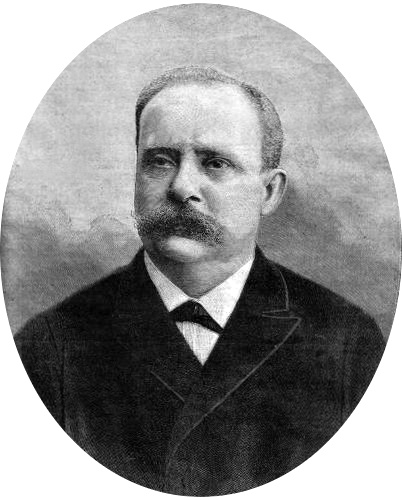Eugène Turpin on:
[Wikipedia]
[Google]
[Amazon]
 François Eugène Turpin (30 September 1848 – 24 January 1927) was a French
François Eugène Turpin (30 September 1848 – 24 January 1927) was a French
"Deadly new gun used by French,"
''Alaska Daily Empire''. Page 1. Sept. 26, 1914. Retrieved Oct. 6, 2014.
 François Eugène Turpin (30 September 1848 – 24 January 1927) was a French
François Eugène Turpin (30 September 1848 – 24 January 1927) was a French chemist
A chemist (from Greek ''chēm(ía)'' alchemy; replacing ''chymist'' from Medieval Latin ''alchemist'') is a graduated scientist trained in the study of chemistry, or an officially enrolled student in the field. Chemists study the composition of ...
involved in research of explosive materials. He lived in Colombes
Colombes () is a Communes of France, commune in the northwestern suburbs of Paris, France, from the Kilometre zero, centre of Paris. In 2019, Colombes was the List of communes in France with over 20,000 inhabitants, 53rd largest city in France. ...
.
Biography
In 1881, Turpin proposed panclastites, a class of Sprengel explosives based on a mixture of a suitable fuel withdinitrogen tetroxide
Dinitrogen tetroxide, commonly referred to as nitrogen tetroxide (NTO), and occasionally (usually among ex-USSR/Russian rocket engineers) as amyl, is the chemical compound N2O4. It is a useful reagent in chemical synthesis. It forms an equilibrium ...
as an oxidizer
An oxidizing agent (also known as an oxidant, oxidizer, electron recipient, or electron acceptor) is a substance in a redox chemical reaction that gains or " accepts"/"receives" an electron from a (called the , , or ''electron donor''). In ot ...
.
In 1885, based on research of Hermann Sprengel, Turpin patented the use of pressed and cast picric acid
Picric acid is an organic compound with the formula (O2N)3C6H2OH. Its IUPAC name is 2,4,6-trinitrophenol (TNP). The name "picric" comes from (''pikros''), meaning "bitter", due to its bitter taste. It is one of the most acidic phenols. Like ot ...
in blasting charges and artillery shell
A shell, in a modern military context, is a projectile whose payload contains an explosive, incendiary device, incendiary, or other chemical filling. Originally it was called a bombshell, but "shell" has come to be unambiguous in a military ...
s. In 1887, the French government adopted it under the name Melinite, with addition of gun cotton. Since 1888, Britain started manufacturing a very similar mixture in Lydd
Lydd is a town and electoral ward in Kent, England, lying on Romney Marsh. It is one of the larger settlements on the marsh, and the most southerly town in Kent. Lydd reached the height of its prosperity during the 13th century, when it was a ...
, Kent, under the name Lyddite. Japan followed with an improved formula known as Schimose.
In 1889, a Captain Tripone stole his secret and sold it to Germany. Turpin was falsely accused of the treason and imprisoned. He was pardoned in 1893 after a campaign led by Le Petit Journal, and exonerated in 1901.
In 1897, Turpin sued Jules Verne
Jules Gabriel Verne (;''Longman Pronunciation Dictionary''. ; 8 February 1828 – 24 March 1905) was a French novelist, poet and playwright.
His collaboration with the publisher Pierre-Jules Hetzel led to the creation of the ''Voyages extraor ...
for basing Thomas Roch from the '' Facing the Flag'' novel on him and the melinite explosive. Verne, defended by Raymond Poincaré
Raymond Nicolas Landry Poincaré (; 20 August 1860 – 15 October 1934) was a French statesman who served as President of France from 1913 to 1920, and three times as Prime Minister of France. He was a conservative leader, primarily committed to ...
, was found innocent; his letter to his brother Paul however confirms the character was indeed based on Turpin.
After World War I
World War I or the First World War (28 July 1914 – 11 November 1918), also known as the Great War, was a World war, global conflict between two coalitions: the Allies of World War I, Allies (or Entente) and the Central Powers. Fighting to ...
, investigation of turpinite confirmed it to be a fictional war gas allegedly developed Eugène Turpin.''Alaska Daily Empire''. Page 1. Sept. 26, 1914. Retrieved Oct. 6, 2014.
Notes
{{DEFAULTSORT:Turpin, Francois Eugene 1848 births 1927 deaths 19th-century French chemists Scientists from Paris 20th-century French chemists